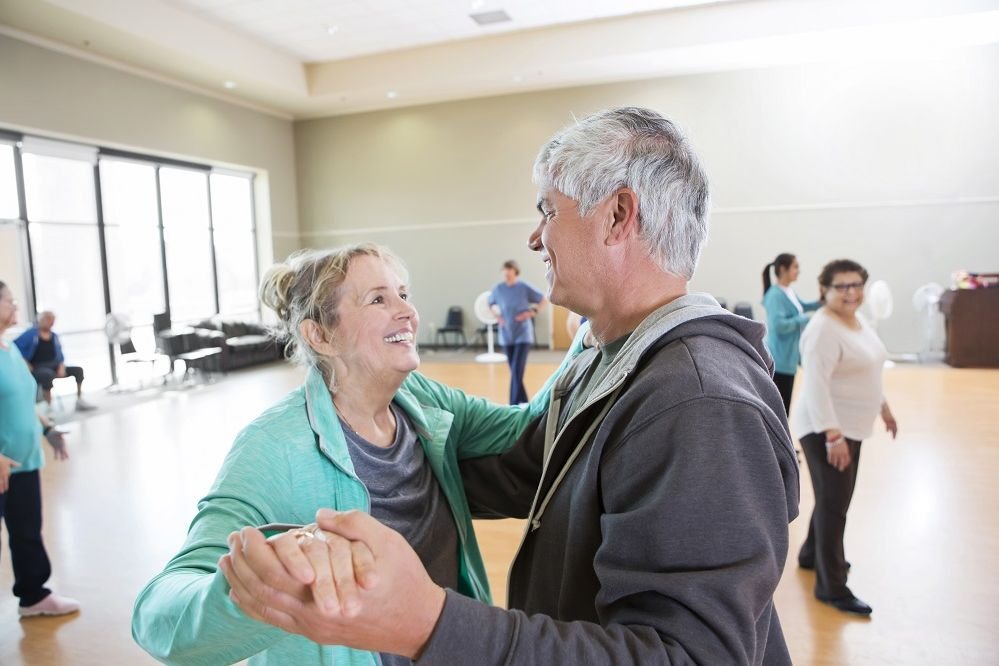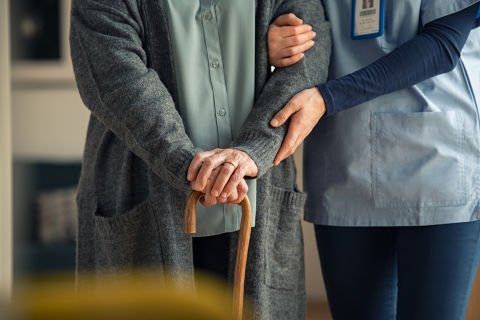Step up to dancing. It's worth a twirl!
Researchers have found that dancing adds zip to life. But did you know it also adds years?

Key points
Studies show dancing for seniors has physical and mental benefits.
Experiment included older Australians learning to dance.
Dancing is like multitasking on steroids.
Seniors will tell you they love dancing because it puts a spring in their step, and now studies have found dancing benefits the mind and the body.
The study followed a group of older people who took part in a one-hour-a-week dance class. At the end of the study, the researchers found that the benefits of dancing included:
- Better posture.
- Quicker reaction times.
More agility.
Sharper minds.
A better overall sense of well-being.
Dancing helped improve motor skills and balance, and there were no deleterious cardio-respiratory effects. It can also slow down the ageing process.
Over 12 weeks, participants in the experiment spent four hours each week learning a routine that combined dance and sign language.
Led by Australian choreographer Kelley Abbey, the program culminated in a live performance at the National Institute of Dramatic Art in Sydney.
The participants also took part in seven health-based assessments that measured their physical and cognitive abilities before and after the program.
After three rehearsals, one of the dancers, 67-year-old Roderick, got feeling back in his legs, something that disease had taken away for the past decade.
"It is pain, but it is bloody good pain," Roderick said.
There was more good news to come.
We slowly lose muscle mass from around the age of 35, a process that speeds up after 60. This can make our bodies weaker and more susceptible to fatigue, making it tougher to get our bodies moving.
Also, the way we walk changes. While we may have been able to dart across the street in our youth, we tend to take shorter, slower steps as we get older, leading to unsteadiness.
So, it is no surprise that falls are the most common cause of injury-related deaths in people over 75, according to data from NHS Digital in the United Kingdom.
Watch a video about reducing trips and falls in older age:
Staying fit and mentally sharp go hand in hand. There is truth in the adage use it or lose it.
In many ways dancing is like multitasking. You are moving your body through space, remembering sequences of steps, and coordinating with other dancers around you while staying in time with the music. Dancing is essentially a 360-degree musculoskeletal and neurological workout.
Researchers found that people with mood disorders who participated in a two-week tango instruction program experienced significant reductions in stress, depression, anxiety, and insomnia.
Ways dancing is good for your health:
- Minimizes symptoms of depression.
- Improves strength and balance.
- A few weeks of salsa dance classes can seriously increase strength and balance.
- Reduces joint pain and stiffness.
- Older adults who engaged in a 12-week, low-impact dance program decreased their pain medication by 39 per cent. Study participants could also move around more easily.
- Protects your heart.
- Unlike other types of cardiovascular exercise, dancing does not necessarily require specialised equipment or workout settings, making it more accessible.
- Defends against dementia.
Dancing is great for your heart. A 2016 study on more than 48,000 participants over 40 found that those who danced had a 46 per cent lower risk of dying from heart disease than non-dancers.
By the end of the experiment, all the participants saw improvements in their fitness, balance, and agility.
Dancing can also help people with Parkinson's disease, which affects about one in 100 people over 65.
People with Parkinson's disease often find it difficult to control their movements. But dancing to music can help them tap into parts of their brain that are not as affected by the disease. Dancing helps them find more flow in their movements, says Natalie Allen, a neurological physiotherapist at The University of Sydney.
“The rhythm of the music helps people with Parkinson's to move more freely and easily," Dr Allen told Catalyst.
76-year-old participant Shirley has Alzheimer’s disease and had the biggest improvement of all the participants. While she may not be able to dance away her condition entirely, her results show that the physical, creative, and social aspects of dance are beneficial.
Compared to other leisure activities, dancing offers the best chance of helping to stave off dementia.
A 21-year study found aging adults who danced regularly had a 76 per cent reduced risk of developing dementia. Experts theorise that dancing benefits our brains by combining cardiovascular exercise with split-second decision-making. Fast decision-making taxes our neural network, forcing it to create new pathways
Experts said an effective way to begin is to consider the type of music you have always enjoyed and how much you want to move.
For Roderick, the benefits are life changing. By the end of the program, he experienced complete feeling in his legs after ten years of numbness.
For further reading: ABC and Aging Care








